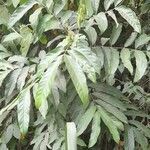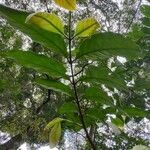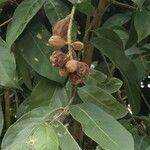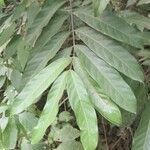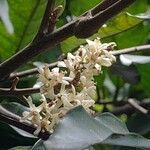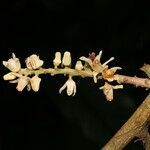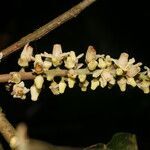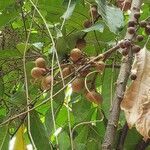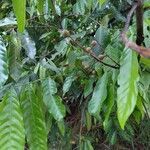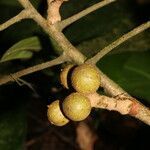Tree to 25 m. tall, sometimes shrubby. Leaves 10-50 cm. long; leaflets 4-7 pairs (occasionally there is a terminal leaflet), elliptical or lance-elliptical, rarely broadly elliptical, the base subacute to acute, the apex obtuse to acuminate-subacute, glabrous to puberulent along the veins above and below, the rachis glabrous, the blade rarely minutely scattered-papillose. Inflorescences axillary, 4-35 cm. long, paniculate, frequently strict, glabrate to sparsely pubescent. Flowers white to yellow, rarely pink, 4-to 5-merous; calyx shallowly cupulate, shallowly to! deeply lobed, lobes rounded to deltoid, occasionally apiculate, glabrate to puberulent particularly on the apiculum; petals scattered-puberulous to densely puberulent without, glabrous to puberulent within; staminal tube nearly entire to, crenulate to deltoid-dentate, glabrous; anthers 8 (-10); ovary sparingly to densely pubescent, borne on a glabrous gynophore. Capsule light to dark-rufous-brown, frequently lenticellate, globose to fig-shaped, nitid-glabrous to pulverulent, 4(-5)-valved, 4(-5)-celled, the cells 1-seeded; seeds about 3/4 covered by a red aril; the largest capsule seen about 1.5 cm. in diam.
More
A shrub or tree. The trunk is straight but branches often. The leaves are compound with an even number of leaflets along the stalk. There are usually 8-10 pairs of narrow opposite leaflets. They are pointed at the tip. The fruit is a capsule with 4 or 5 valves. The seeds are covered with an orange red pulp.
Lowland forests in Panama. Often found in gallery forests, on alluvial plains and in valleys, it is found in both dense primary forests and, more commonly, in secondary formations.
More
It is a tropical plant. It grows in the forest. In Argentina it grows below 500 m below sea level.
